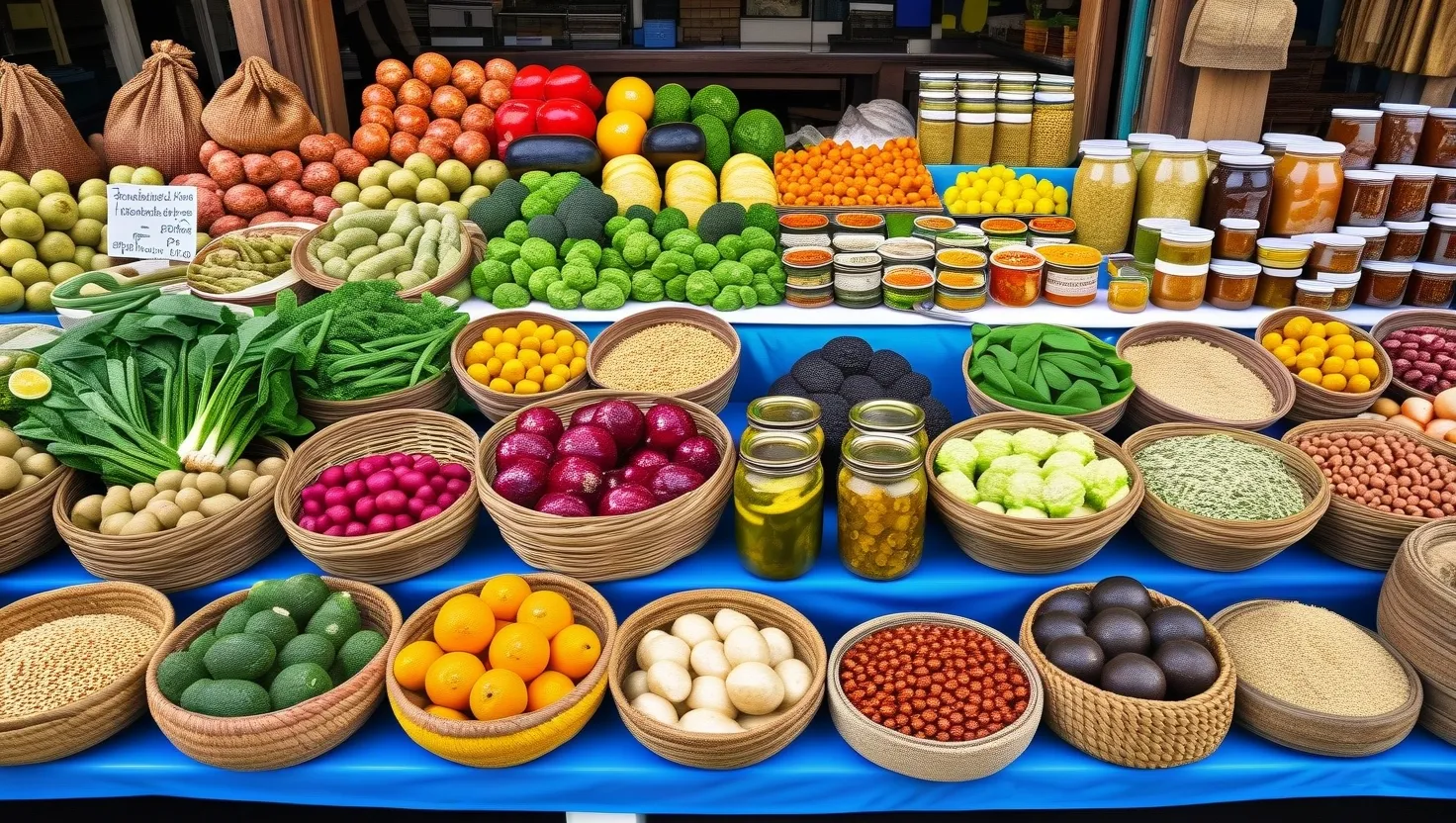In recent years, there has been a significant shift in how people approach their diets, with a growing interest in adopting eating habits that our ancestors practiced. This trend, often referred to as the ancestral diet revival, goes beyond the popular Paleo diet and delves into the diverse traditional food systems of various cultures and historical periods.
One of the driving forces behind this movement is the dissatisfaction with the modern food system. Consumers are increasingly weary of over-processed, empty-calorie foods that not only fail to support good health but also contribute to a range of diet-related diseases. In response, many are looking back to traditional practices and ancient remedies for guidance. This return to ancestral diets is not just about nostalgia; it’s about rediscovering nutritional wisdom that has been lost in the industrialization of food.
For instance, Indigenous communities in Northwestern North America have long valued their ancestral foods, which were rich in nutrients and well-balanced. Their original diets consisted mainly of local plant and animal foods, including salmon, game, diverse plants, seaweed, and other marine foods. These foods provided healthy amounts of protein, carbohydrates, fats, essential vitamins, and minerals, as well as dietary fiber. However, the introduction of European foods, such as refined sugar, significantly altered their diet and led to health issues like type 2 diabetes.
Today, there is a resurgence in these ancestral foods, driven by initiatives to restore and revitalize traditional food systems. These efforts are often linked with language revitalization and cultural resurgence programs, highlighting the deep connection between food, culture, and health. By returning to their ancestral foods, Indigenous communities are not only improving their health but also strengthening their cultural identities.
The trend of adopting ancestral diets is not limited to Indigenous communities. Around the world, people are exploring traditional food systems that have been passed down through generations. For example, the Mediterranean Diet, which has been recognized as one of the healthiest diets, is rooted in the traditional eating habits of the Mediterranean region. This diet emphasizes whole grains, fruits, vegetables, and healthy fats, such as those found in olive oil, and has been shown to reduce the risk of heart disease and other chronic conditions.
Another aspect of this trend is the revival of ancient cooking techniques. Fermentation, for instance, was a key method for preserving food before the advent of refrigeration. Today, fermented foods like kimchi, sauerkraut, kefir, and kombucha are gaining popularity due to their health benefits, including improved digestion and enhanced nutrient absorption. These foods are rich in probiotics, which support gut health and overall well-being.
The shift towards whole, minimally processed foods is also part of this broader movement. Consumers are seeking meals that include whole grains, unprocessed proteins, and natural sweeteners, moving away from the highly processed foods that dominated previous decades. This trend aligns with the growing demand for transparency in food ingredients and production processes, as people become more conscious of the impact of their dietary choices on their health and the environment.
Comfort foods, which often evoke a sense of nostalgia, are also making a comeback. Classics like meatloaf, macaroni and cheese, and pot pies are being reimagined with modern twists, such as using organic ingredients, lower sodium, or plant-based alternatives. This approach not only satisfies nostalgic cravings but also caters to the health-conscious consumer.
The art of canning and preserving food is another traditional practice that is seeing a revival. This method allows for the capture of peak-season flavors and reduces food waste, aligning with the sustainable eating trend. Preserved ingredients like sun-dried tomatoes, pickled vegetables, or fruit compotes add depth to dishes and appeal to eco-conscious consumers who value both taste and sustainability.
Beyond these practical benefits, the ancestral diet revival is also about reconnecting with cultural heritage in a globalized world. Food has always been a central part of cultural identity, and by embracing traditional diets, people are able to reconnect with their roots. This movement challenges the homogenization of food cultures that has occurred with the spread of industrial food systems.
In addition, this trend highlights the importance of preserving traditional knowledge and practices. For example, the use of cod liver oil, raw milk, and grass-fed meat is being rediscovered for their health benefits. These foods, which were once staples in many diets, are now recognized for their nutritional value and are being incorporated into modern health regimens.
The health impacts of these ancestral diets are significant. By focusing on whole, nutrient-dense foods, people can address a range of modern health issues, from obesity and diabetes to heart disease and certain types of cancer. These diets often promote a balanced intake of macronutrients and micronutrients, which is essential for maintaining good health.
Moreover, the ancestral diet revival is not just a personal choice but also a political statement. It challenges the industrial food system, which has been criticized for its environmental impact, labor practices, and contribution to public health issues. By supporting local, sustainable food systems and traditional farming practices, consumers are voting with their wallets for a more equitable and sustainable food future.
In conclusion, the ancestral diet revival is more than just a dietary trend; it is a movement that seeks to rediscover and celebrate the nutritional wisdom of our ancestors. By embracing traditional food systems, we are not only improving our health but also reconnecting with our cultural heritage and supporting sustainable food practices. As we navigate the complexities of modern life, looking back to our ancestral diets offers a compelling way forward, one that combines the best of the past with the needs of the present.






